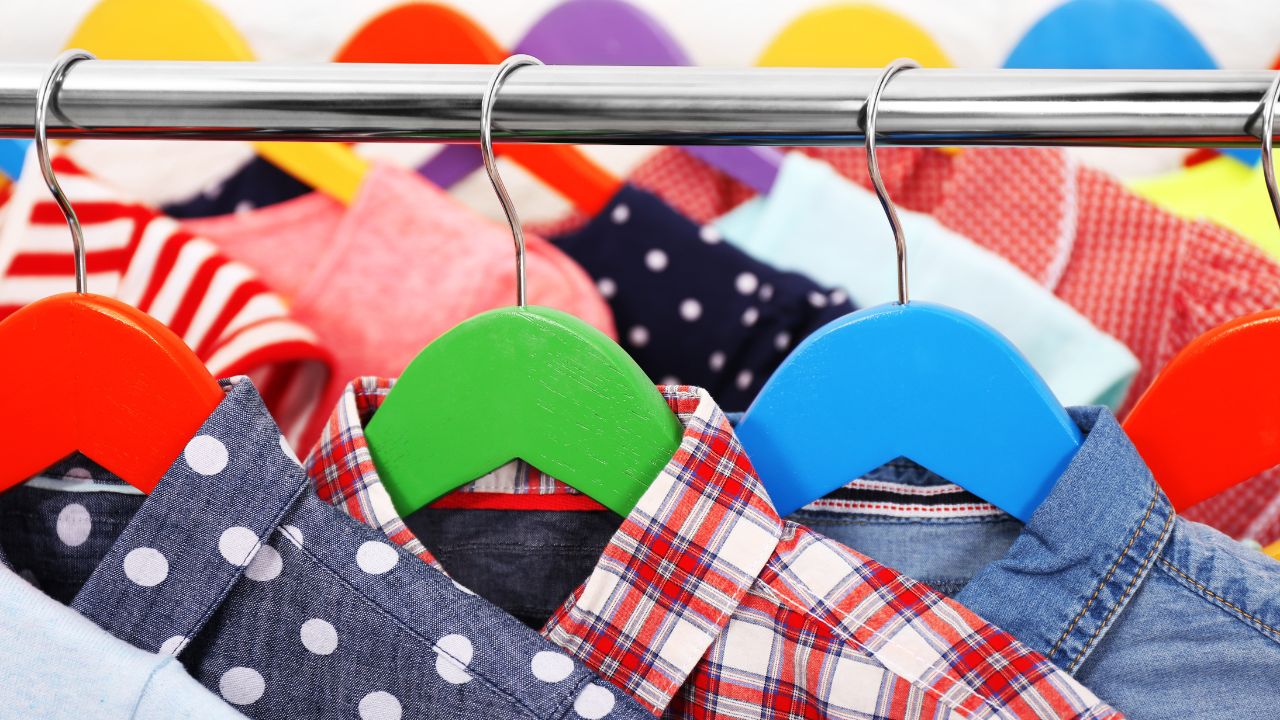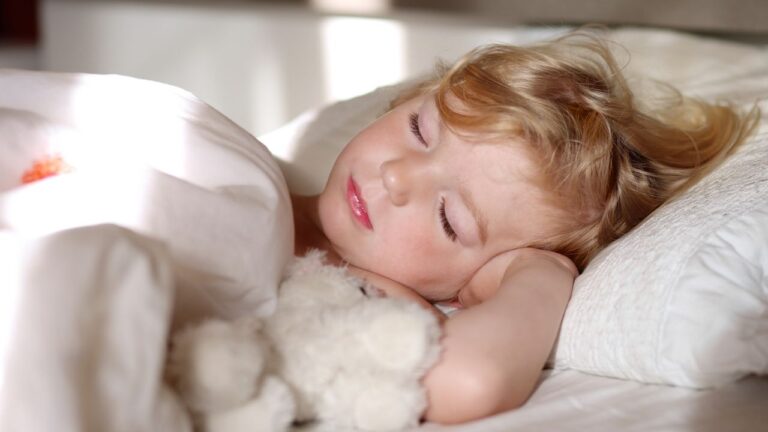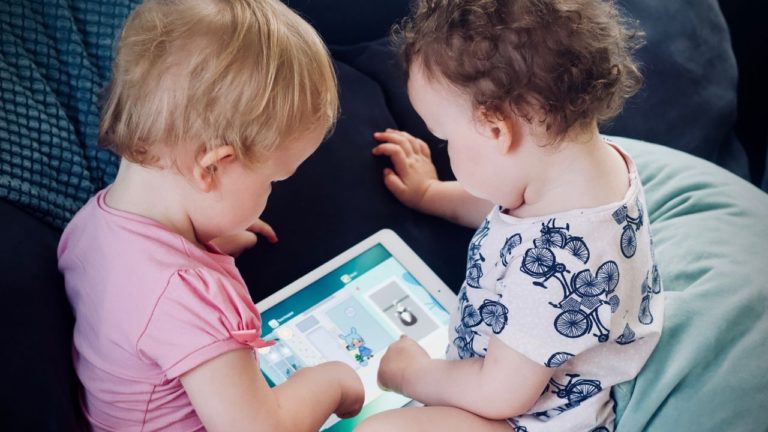What Size Is After 4T? Toddler Clothing Sizes Explained
This post may contain affiliate links and we may earn commissions when you make a purchase through these links (at no extra cost to you). See our disclosure policy for more details.
An Overview Of Toddler Clothing Sizes
Ready to move on to the next size, but not sure what size is after 4T? Don’t worry, I’ve got you covered!
I get it, kids’ clothing can be a little confusing. You’ve already been through all of the infant and toddler sizes.
So now you’re wondering: Is it time to move on to kid sizes yet?
This quick guide will give you all the information you need about toddler clothing sizes and what comes after 4T.
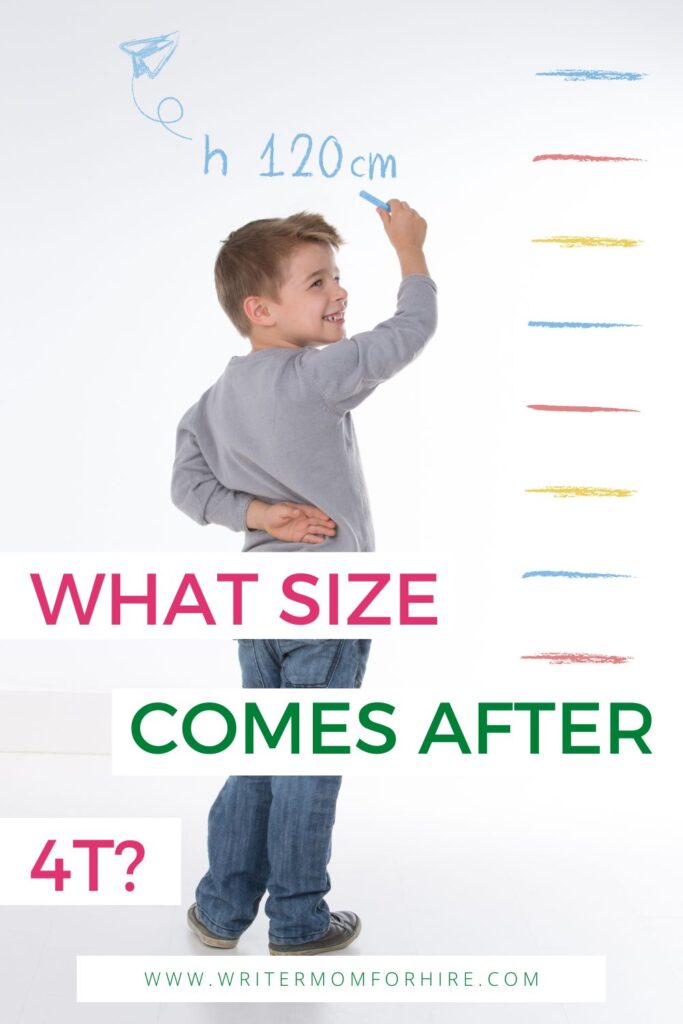
What Size Is After 4T?
There are a couple different options when your child has outgrown 4T: You can either go to a 5T or a kids’ size 5.
These two are close in terms of size to one another. The sizes of the clothes in the children’s department are a little bit larger than those seen in the toddlers’ department.
Your child may wear a kid size if the toddler size is sold out, and vice versa.
A taller, fully potty trained toddler may be able to wear a child size instead of a toddler size, since kid sizes are slightly longer and have less room in the bottom.
Pants
5T bottoms often include more space for diapers and pull-ups, ensuring that your kid will not feel excessively restricted while still learning how to use the bathroom.
They also tend to be tapered at the ankles more commonly than standard 5s bottoms (as are most baby and toddler pants).
Shirts
On their tags, several manufacturers write the size as 4/5, which indicates that they blend size four and size 5. A 4/5 shirt tends to be the same length as a 5T shirt, but a 5T shirt is often a little bit broader.
Pajamas
Kids’ pajamas are designed to fit a little snug, but if your child is moving into 5T clothes, then size 5T pajamas will likely be a good fit.
Underwear
Underwear sizes don’t necessarily line up with regular clothing sizes, which can get a little confusing. Use your child’s waist measurement to determine their underwear size.
Underwear Sizing for Girls
Underwear Sizing for Boys
Are 4T And XS The Same Size?
In short: They are almost exactly the same size. In most retail stores, a size 4 is regarded as an extra small size and is intended for the youngest and most petite of the older children.
It is nearly identical to a size 4T, designed for toddlers a little bit older.
Around age four, the size charts for toddlers and children begin to overlap, likely the source of all the confusion on our part, as the parents or caregivers shopping for them!
But yes, the sizes 4T and 4 (XS) are almost identical at most retail establishments. Both should be suitable for children of a typical size who are around three or four years old.
The Difference Between Size 4T And Size 4
Size 4 is typically just a tad bigger than 4T, with pants being about an inch or two longer and the waistband wide enough to accommodate a couple of extra pounds.
However, this can vary widely from store to store and brand to brand. The difference is negligible when it comes down to it, and most kids can get away with wearing either one.
Size 4T Average Measurements
Instead of going by age, also consider the child’s height and weight while shopping for children’s clothing.
Once you have their measurements, you can use a size chart to find the appropriate clothing size for them. The height, weight, chest, and waist measurements are provided in both inches/pounds and centimeters/kilograms.
| Height | 38″–41″ | 96 – 104 cm |
| Weight | 33–37.5 lbs. | 16 – 18 kg |
| Chest | 21 – 22″ | 53 – 56 cm |
| Waist | 21.5 – 22″ | 55 – 56 cm |
European Clothing Sizes Vs. American Sizing
Other than clothing in British sizes, European sizing is significantly different than that of American companies.
Infant and toddler clothing sizes in the United States are often organized by age rather than by size. In most cases, big kids’ sizes are determined by the child’s weight and height, although the chest, waist, and hip measurements are also included.
Standard size charts in the rest of Europe take height into account. Apparel manufacturers often create garments according to their standard sizing.
Therefore international size conversions are just rough estimates.
Size 5T Average Measurements
Use this chart to determine whether 5T would be a good fit for your child. The height, weight, chest, and waist measurements are provided in both inches/pounds and centimeters/kilograms.
| Height | 41-43.5 inches | 104-111 centimeters |
| Weight | 38-44 pounds | 17-20 kilograms |
| Chest | 23-25 inches | 58-64 centimeters |
| Waist | 21-22.5 inches | 53-57 centimeters |
What Size Is After 5T
The next size up from 5T is size 6.
Because a size 6 can be quite a bit larger than a 5T size and may be too big, some parents purchase standard-size five clothes after the child has potty trained.
The only information that is included on the tag for toddler (T) sizes in the United States is the age at which your kid is anticipated to fit into them.
Taking Your Child’s Clothing Measurements
When it comes to measuring kids, it’s not a bad idea to measure twice – and write the numbers down right away!
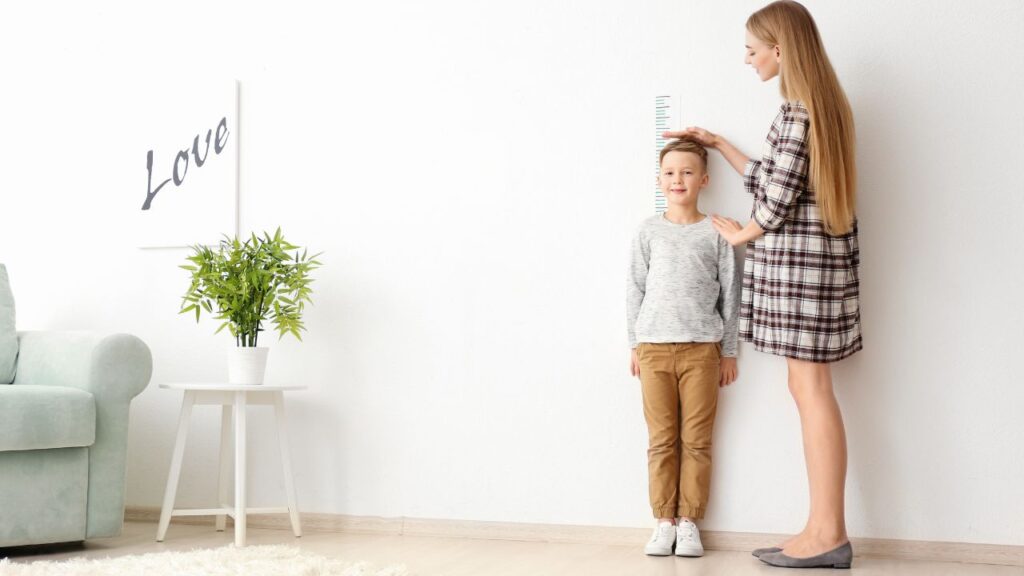
Height
Use a measuring tape to take your kiddo’s height measurement. The easiest way is to have them stand up straight against a wall with their heels flush against the wall.
Waist
For an accurate measurement, measure around the waist at the belly button. (Just don’t measure over the pants.)
Chest
Get your child to relax their arms at their sides. Measure under the arms around the widest part of the chest.
Pro Mom Tip: Use a soft measuring tape for the easiest and most accurate waist and chest measurements.
Moving Up To A Bigger Size
How do you determine when to move your child up to the next clothing size?
When I start seeing that my girls’ sleeves or pants legs are getting too short, or when their bellies are showing, I’ll either pass it down to the next kid or sell/donate that item of clothing.
I also do this when they struggle to get their clothes on or off.
Once their closets and drawers start looking a little sparse, I know it’s time to start transitioning them into the next size up.
Why Clothing Needs To Fit Properly
Nobody wants to wear clothes that are too tight or too baggy – kids included.
Tight clothes restrict movement, and we all know how active kids are! Baggy clothes, on the other hand, can trip them or get caught on things, which could potentially be dangerous.
For some items, I’ll buy a size larger so they can grow into it, but of course you don’t want to go too big for the previously discussed reasons.
Kids’ Clothing Size Chart
Because converting number sizes to letter sizes (and even European sizes) can be confusing, here’s a quick size chart to help you convert one size into another.
| Number Size(s) | Letter Size | European Size |
| 4/5 | XS (Extra Small) | 107-119 cm |
| 6/6X | S (Small) | 119-129 cm |
| 7/8 | M (Medium) | 129-137 cm |
| 10 | L (Large) | 137-145 cm |
| 12 | XL (Extra Large) | 145-151 cm |
| 14 | XXL (Extra Extra Large) | 151-157 cm |
Conclusion
Knowing the distinctions between toddler and kid sizes can help you figure out your child’s clothing needs. To be absolutely sure, and to avoid getting the wrong size, measure them before going shopping or placing an online order!
Is your kiddo outgrowing 4T and moving on to size 5T clothes? Check out these great options on Amazon.
Recommended Reading:
18 Engaging Activities to Teach Colors to Toddlers & Preschoolers
Name Bubbles Review: Personalized Name Labels for School, Daycare, and More
What to Pack for Preschool: Checklist for Parents of 3-5 Year Olds

